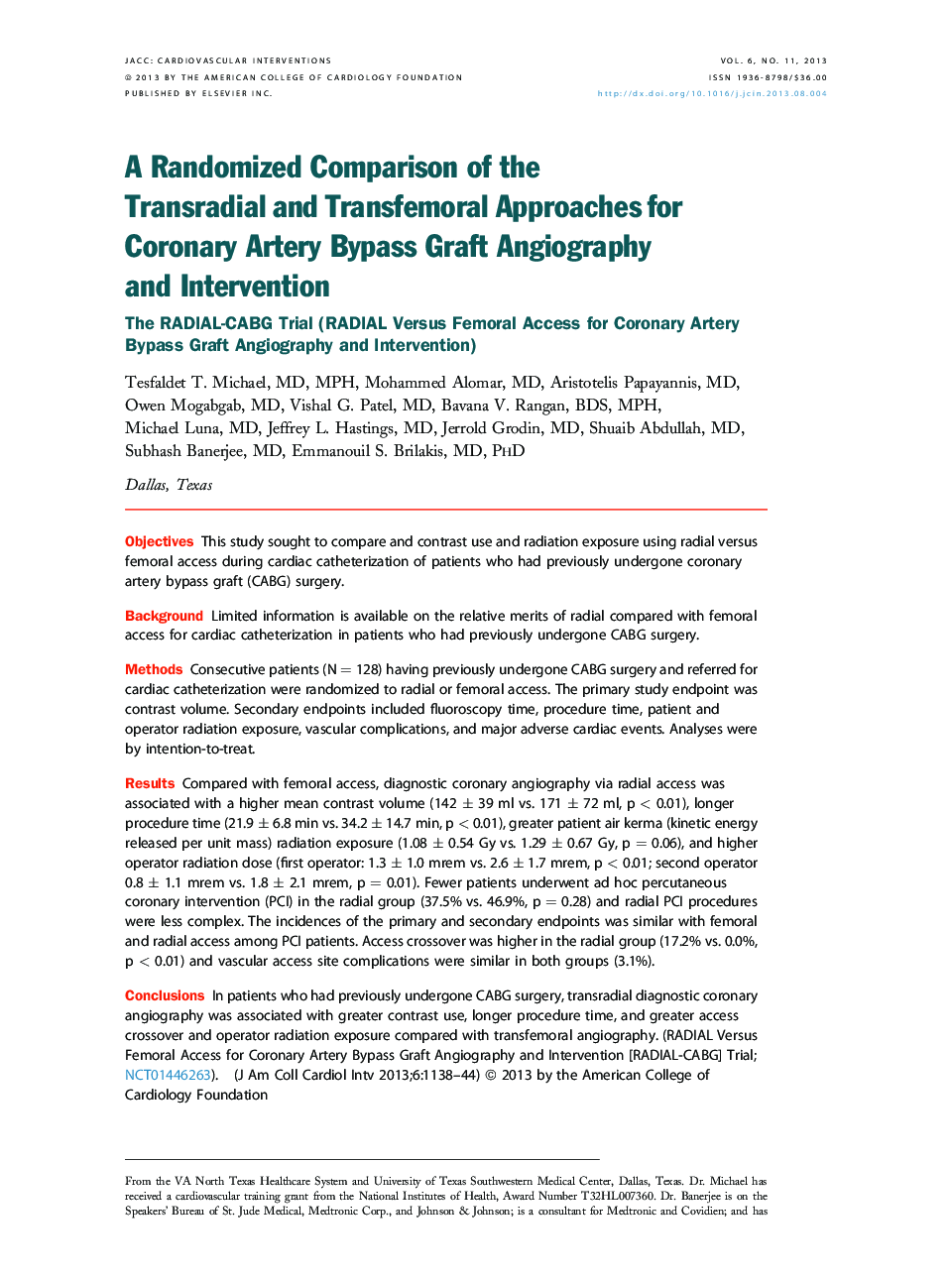| Article ID | Journal | Published Year | Pages | File Type |
|---|---|---|---|---|
| 2940460 | JACC: Cardiovascular Interventions | 2013 | 7 Pages |
ObjectivesThis study sought to compare and contrast use and radiation exposure using radial versus femoral access during cardiac catheterization of patients who had previously undergone coronary artery bypass graft (CABG) surgery.BackgroundLimited information is available on the relative merits of radial compared with femoral access for cardiac catheterization in patients who had previously undergone CABG surgery.MethodsConsecutive patients (N = 128) having previously undergone CABG surgery and referred for cardiac catheterization were randomized to radial or femoral access. The primary study endpoint was contrast volume. Secondary endpoints included fluoroscopy time, procedure time, patient and operator radiation exposure, vascular complications, and major adverse cardiac events. Analyses were by intention-to-treat.ResultsCompared with femoral access, diagnostic coronary angiography via radial access was associated with a higher mean contrast volume (142 ± 39 ml vs. 171 ± 72 ml, p < 0.01), longer procedure time (21.9 ± 6.8 min vs. 34.2 ± 14.7 min, p < 0.01), greater patient air kerma (kinetic energy released per unit mass) radiation exposure (1.08 ± 0.54 Gy vs. 1.29 ± 0.67 Gy, p = 0.06), and higher operator radiation dose (first operator: 1.3 ± 1.0 mrem vs. 2.6 ± 1.7 mrem, p < 0.01; second operator 0.8 ± 1.1 mrem vs. 1.8 ± 2.1 mrem, p = 0.01). Fewer patients underwent ad hoc percutaneous coronary intervention (PCI) in the radial group (37.5% vs. 46.9%, p = 0.28) and radial PCI procedures were less complex. The incidences of the primary and secondary endpoints was similar with femoral and radial access among PCI patients. Access crossover was higher in the radial group (17.2% vs. 0.0%, p < 0.01) and vascular access site complications were similar in both groups (3.1%).ConclusionsIn patients who had previously undergone CABG surgery, transradial diagnostic coronary angiography was associated with greater contrast use, longer procedure time, and greater access crossover and operator radiation exposure compared with transfemoral angiography. (RADIAL Versus Femoral Access for Coronary Artery Bypass Graft Angiography and Intervention [RADIAL-CABG] Trial; NCT01446263).
